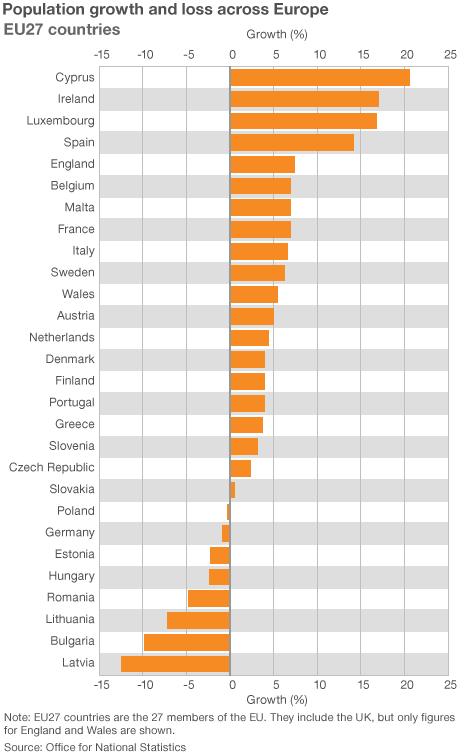England and Wales population up
- Published
The first figures from the 2011 census have been released and show there has been a huge increase in the population of England, Wales and Northern Ireland.
The census - carried out in March last year - found there were 53 million people in England; 3.1 million in Wales; and 1.8 million in Northern Ireland.
It also revealed there were 33 times as many people over 90 as there were a century ago.
Here's a round up of what the first England and Wales data reveals. UK-wide census-based population estimates, including Scotland, will be released in December 2012.
More people
The population of England and Wales has risen by 3.7 million in a decade, up to 56.1 million, the census shows. It is the largest growth shown by any census since they began in 1801.
The growth was fuelled by increased life expectancy, a rise in fertility rates and migration, the Office for National Statistics (ONS) said.

Ageing population
The figures also indicate the population is ageing, with the median age rising to 39 in 2011 from 35 in 2001.
The percentage of the population aged 65 and over was the highest seen in any census at 16.4% - or one in six people.
The number of people over the age of 90 also went up. There were 430,000 residents within their 10th decade in 2011, compared with 340,000 in 2001 and 13,000 in 1911.
The census showed that higher percentages of people aged 65 and over lived along the coast of England, in the south west, south east and east.
Eastern European emigration
European population growth between 2001 and 2011 differed greatly between countries.
While some, such as Cyprus, Ireland, Luxembourg, Spain and England, saw big increases, others, mainly in eastern Europe, experienced population losses.
Latvia, Bulgaria, Lithuania, Romania, Hungary, Estonia, Germany and Poland all saw their populations decrease.

Regional differences
Although all of the wider regions of England and Wales saw population growth in the last decade, within those regions some local authorities saw theirs decline.
The biggest population growth was seen in London's Tower Hamlets (up 26.4%) and Newham (up 23.5%), while Manchester showed the third highest growth - up 19%.
Overall, 10 of the 20 authorities with the highest percentage growth were in London. The 19 most densely populated authorities were also in London.
In contrast, almost half of the local authorities with a declining population were in north-west England, and a further four were in north-east England. The ONS suggested this could be, in part, down to the decline in traditional manufacturing industries in these areas.